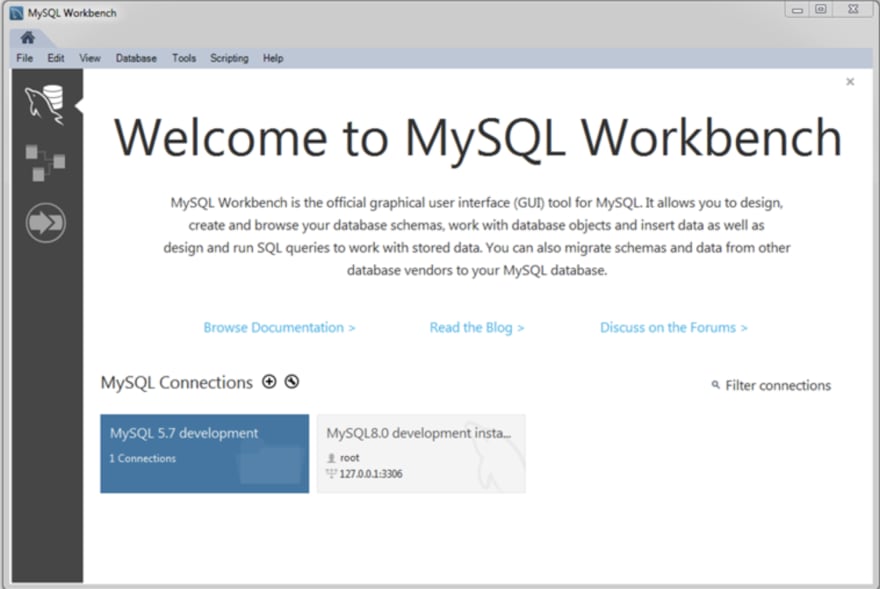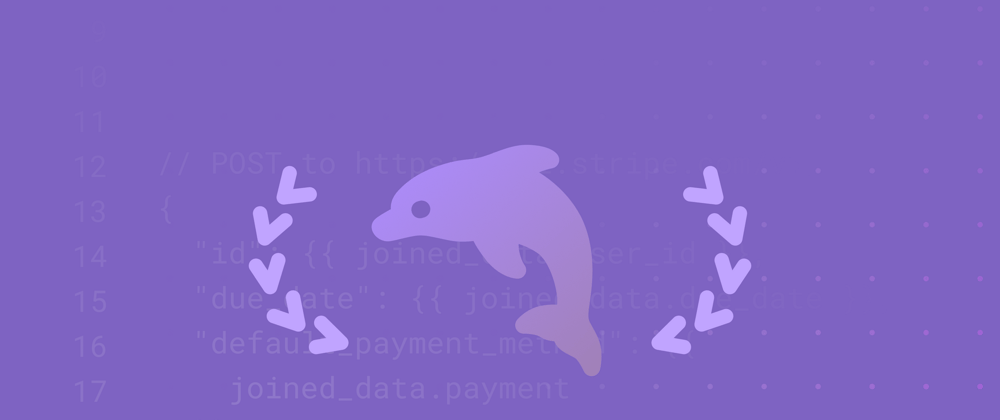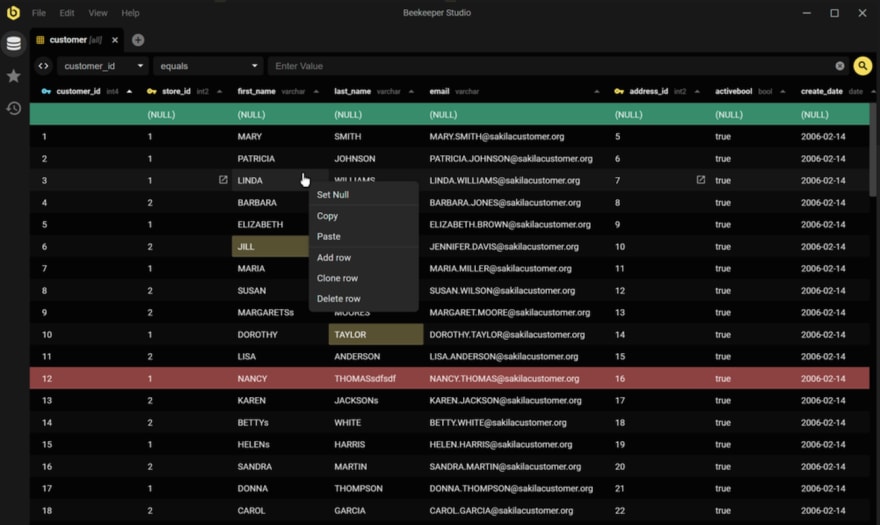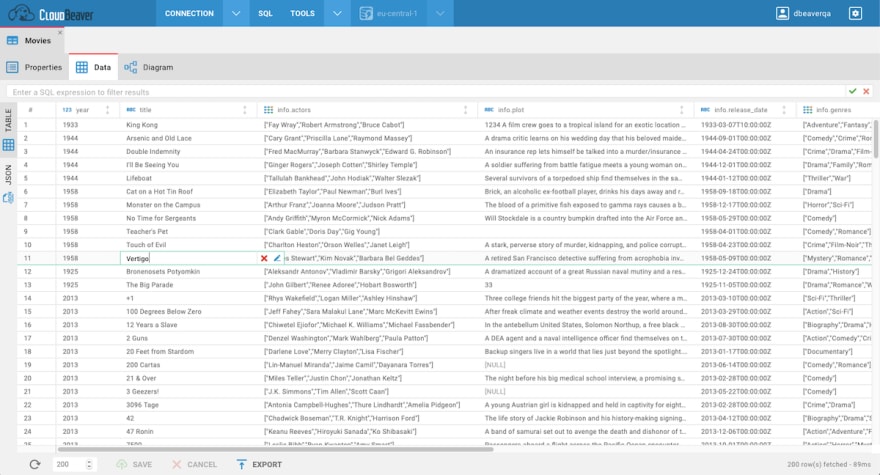Ahead of Postgres and SQLite, MySQL has been the leading relational database for years. This is corroborated most recently by Stack Overflow's 2021 Developer Survey, in which 50.18 percent of all respondents (73,317) claim to have used MySQL extensively and plan to do so in the coming year.
However, many find MySQL challenging to manage despite its simpler design. GUIs have become increasingly central to delivering exceptional user experiences. Database managers are faced with a number of tasks, including the following:
- Object management and automation
- Data analysis
- Creating and executing queries
- Developing and debugging stored routines
MySQL Shell might feel unapproachable, and even its fundamental components like MySQL Workbench or MySQL Connectors don't appeal to everyone. Some may not even require every advanced feature under the database's umbrella. Thankfully, the third-party tooling market has grown substantially throughout MySQL's twenty-six-year history.
This article breaks down the leading MySQL tools and their benefits (plus potential drawbacks).
Selection criteria
The goal was to find tools with well-rounded functionality. Each is evaluated on the following:
- Features---what can you do with the tool, and how well do these capabilities align with MySQL's native functional offerings? How might these tools exceed expectations, or democratize the utilization of MySQL within teams?
- Platform compatibility---is the tool developed for specific OSs, or does it have cross-platform availability for Windows, Mac, Linux, and even the web?
- SQL autocomplete support---is the MySQL Intellisense feature baked in or emulated, both to save time and reduce scripting effort within the editor?
- Special MySQL support---does the tool integrate with MySQL in any novel ways that differentiate it from competitors?
This assessment is meant to be as objective as possible, with added comments that you might find helpful. Here are the top five picks.
Adminer
Adminer interface, via online demo editor
Perhaps one of the more no-nonsense members on this list (in stock form), Adminer aims to provide powerful functionality within a simplified package. Launched in 2007, the tool prioritizes security, performance, and size. You can select your preferred look from over twenty-five included themes---sourced by Adminer's developers, with others contributed by community members.
Installation
The tool promises robust database management using a single PHP file. This makes it relatively easy to set Adminer up on any machine with PHP. Learn how to set up PHP on your computer with this guide.
You can install optional MySQL database servers either locally or remotely. This second option lets you tap into a remote machine as needed, saving space on your physical drive. Accordingly, it may be advantageous to install any database extensions for MySQL that you cannot live without. This is great preparation for the remaining steps.
Finally, download the latest Adminer PHP file directly from Adminer's website. Any associated plugins you'll want to add are hosted and documented on this website and on Adminer's GitHub page. Getting started is as easy as logging into your essential databases.
Features and MySQL support
To understand how Adminer stands out, compare it with another leading MySQL GUI, phpMyAdmin. Adminer offers numerous improvements, according to its developers:
- It's available in a MySQL-only version---purpose-built without excessive bloat
- Permanent logins
- Automatic field generation
- Multi-index manipulation
- Complete foreign-keys support with an associated interface
- Full support for triggers, routines, and events
- Absolute and relative modification support in bulk
- Safer row cloning with confirmation, avoiding overwrites
- Seamless anywhere-synchronization using an ALTER export
- Multi-query SQL results displayed in a single view
- Concurrency with multiple tabs during complex operations
Adminer requires secure logins for all integrated databases, and employs rate limiting to thwart brute force attacks. It's built to be lightweight and rapid thanks to asynchronous data downloading. Table fetching isn't a limiting factor when requesting lists.
Among other features, Adminer allows plenty of table manipulations---especially those involving listing, indexing, altering, creating, dropping, and adding records or indexes. You can execute any SQL command using text fields and files. It's also possible to create new databases, export data structures, kill processes, and display users alongside their rights. Adminer allows all of this while encouraging you to harness your preferred data type.
Best use cases
The makers of Adminer highlight two seemingly paradoxical benefits: its simplicity and its customizability. But customization isn't necessary to get the most out of the GUI. It's available for power users, while the base package remains usable to novices.
That said, flexibility is a major strength of Adminer. It allows experienced developers to stretch their capabilities with plugins, extensions, and other APIs. It's great for those with solid knowledge of PHP and avoids the one-size-fits-all pitfalls of other applications. Finally, the toolset is welcoming to newcomers thanks to liberal inclusion of text fields, drop-downs, toggles, checklists, and radio buttons.
Beekeeper Studio
Decidedly the junior compared to something like Adminer, Beekeeper Studio first launched in early 2020 as a modern approach to MySQL database management. This is reflected in its aesthetic, which mirrors that of other GUI-centric applications in the past five years. The interface and editor come with numerous content views, most of which are information-rich and well-organized. Development has also been steady, with forty-one releases in the past year and a half (at the time of writing).
Installation
Beekeeper Studio is compatible with Windows, Mac, and Linux. The program is built primarily using Vue, TypeScript, and JavaScript. No PHP downloads are required locally. To get started, install the appropriate .dmg or package directly from Beekeeper's website.
You can get started with Beekeeper within minutes, depending on your OS.
Features and MySQL support
Beekeeper highlights a host of key features on its homepage. Security is highly important, given that SSL encryption is standard for all database connections. Beekeeper will hold onto your password for safekeeping. It also helps you connect through firewalls via specific ports.
Beekeeper Studio supports SQL autocompletion through the built-in editor, which provides dev-friendly features like syntax highlighting and pop-up suggestions. This makes it much easier and less tedious to fly through numerous SQL queries. Beekeeper also provides the following:
- Support for dozens of concurrent tabs within one unified window
- Quick saving and organization of common SQL queries
- Quick and easy data table changes, with the ability to stage changes later on
- Straightforward creation, editing, and deletion of table columns, indexes, and relations using the GUI
- Data export in CSV, JSON, JSONL, and SQL in just a few steps---even in conjunction with specialized data filters
Beekeeper also supports multiple run contexts. It's possible to run all queries by default, run the current highlighted query, or run selected queries only. Once data is retrieved and arranged in a table, you can filter, sort, and peruse this information however you wish. Beekeeper also supports a number of default keyboard shortcuts.
Best use cases
Beekeeper Studio is designed to work with several DBs, like Postgres, SQLite, and SQL Server. It's not built solely for MySQL and is therefore better suited for day-to-day data lookup and manipulation, as opposed to intensive or detailed projects. Compared to something like Adminer, Beekeeper supports a smaller array of MySQL-specific features, which you might miss.
The editor is the star of the show here. It's attractive, easy to work with, and relatively powerful. If you're looking to bang out numerous lines of SQL queries, you'll feel right at home within the app.
CloudBeaver
CloudBeaver's integrated schema diagrams\
Released around the same time as Beekeeper Studio, CloudBeaver is a smaller, open-source project supported by a stable of thirteen contributors. Because of this, development schedules are a little more deliberate, but that hasn't stopped CloudBeaver from fine-tuning its lightweight, user-friendly GUI. The interface is clean and has both dark and light modes. CloudBeaver also presents users with informative visualizations, keeping you engaged and organized as databases scale. Being a web application, this tool is accessible to a larger subset of users without consuming too many resources or disk space.
Installation
CloudBeaver comes in three flavors. First is the web application, which leverages a web server and JavaScript frontend. While this method is accessible, CloudBeaver warns that the setup process can be somewhat complex.
Next is the popular community build, which is free. CloudBeaver distributes this as a Docker image on Docker Hub or as source code.
The final version is CloudBeaver Enterprise. The development team has made a Docker container specifically for this purpose, or you can secure an AWS-compatible version within the AWS Marketplace. The application is predominantly built using TypeScript and Java.
Installing CloudBeaver requires the Terminal and some scripts. Use either docker pull dbeaver/cloudbeaver:latest to pull the current build, or docker pull dbeaver/cloudbeaver:dev to grab the newest developer build.
You can run CloudBeaver using the Terminal, using daemon mode, or by accessing localhost databases.
Features and MySQL support
At the macro level, CloudBeaver offers you its data editor, data export, entity diagrams, SQL editor, AWS-and-Docker integration (RDS, Redshift, Dynamo DB, Docker Hub), and execution planning. However, let's dig a little deeper to understand how helpful these features) are.
The data editor displays data from tables and queries in a readable list format composed of labeled rows and columns:
Scanning these custom categories and arranging data in a sensible format is doable in a snap. Both relational and document-oriented databases are supported. Quickly view values for all data types, read from tables regardless of length, use the dedicated data-filter panel, or even order tables based on column numbers.
For export, CloudBeaver supports CSV, XLSX, XML, JSON, and SQL INSERTs formats. Entity diagrams offer more interesting features. Should you want to visualize your entire database schema, Beaver will provide a flowchart-style diagram with labels and categorized data points. Unique keys, foreign keys, and automatic layouts are supported by default. You can even export this visualization as a PNG or SVG file for safekeeping.
The SQL editor supports syntax highlighting for different dialects and even provides auto-completion for columns, tables, SQL keywords, and procedures. Query results are viewable in multiple concurrent tabs.
You can integrate CloudBeaver with your AWS account to unlock authorized browsing of AWS databases using AWS credentials and RDS authentication. This type of process relies either on Kerberos or Active Directory, and thus allows you to clamp down on unintended access. You also have compatibility with Docker environments and the ability to serve local or remote databases.
Finally, the execution plan feature generates a query-execution tree in a results tab and evaluates whether scripts and queries are designed to work optimally in their existing formats.
Best use cases
If you prefer integration with AWS, you'll love CloudBeaver. The tool is built from the ground up with these platforms in mind, offering an expansive list of possibilities for serving and pulling databases from multiple sources.
CloudBeaver is also good for team collaboration---you can invite contributors to join project workspaces with a simple, shareable link. It's a viable solution for enterprises and common users alike---while other tools don't offer specialized corporate versions. That alone speaks volumes.
phpMyAdmin
phpMyAdmin demo interface
A stalwart in the database management space, phpMyAdmin launched in 1998 and has since enjoyed voracious support. GitHub has recorded 469 releases since launch---an ambitious schedule made possible by over 1,100 contributors. It's written mainly in PHP.
Installation
At the OS level, phpMyAdmin supports Windows and various Linux distributions. However, be warned that macOS is NOT supported.
Choose an appropriate distribution kit from the website's Downloads page, unzip it, connect to your web server, and configure the tool accordingly. You might opt for MyAdmin's new wizard-style installation, which makes things easier.
There are three other ways to install phpMyAdmin: using a Git package, via Docker, or via Composer. These utilize images and tarballs.
Features and MySQL support
The web-based phpMyAdmin tool allows you to use either the GUI or direct commands.
The tool also offers the following features:
- Support for MySQL functions like browse or drop for tables, databases, fields, views, and indexes
- Create, copy, drop, and rename functions for the above items
- Support for server configuration proposals and server maintenance
- Importing and exporting data in a wide range of formats
- Administering multiple servers
- Creating multi-format database graphics
- Creating complex Query by Example (QBE) queries
- Global and subset database searches
- Transformation of stored data using predefined functions and formats---even converting BLOBs into links or images
phpMyAdmin supports both LTR and RTL languages. The tool has been translated into seventy-two languages, making it accessible for global users.
Best use cases
phpMyAdmin has had plenty of time to develop a list of highly requested features. Administrators and architects can trust it to handle tasks ranging from menial to intricate.
MySQL Workbench

MySQL Workbench was launched in 2015 as a visualization tool for database architects, developers, and DBAs. It's a full-fledged suite that allows you to data model, develop SQL, and administer everything around your databases. It's written mainly in C++ and has twenty-five releases stored on GitHub.
Installation
MySQL Workbench is available for Windows, macOS, and Linux distributions. It's designed to work best with (yet doesn't require) a MySQL server connection, along with simultaneous client connections.
MySQL Workbench can be installed via the command line. However, there are unique installation pathways for each OS.
Features and MySQL support
MySQL Workbench is primarily a GUI-centric tool and thus ditches the scripting interfaces found elsewhere. Designed to work with MySQL Server 5.6+, it offers the following:
- create and manage database-server connections, connection parameters, and integrated query execution
- assemble data into meaningful graphical designs, reverse and forward engineer between schemas and live databases, and edit all database elements as needed. The Table Editor makes it easy to alter tables, columns, indexes, triggers, options, privileges, inserts, and partitioning
- server-instance management, auditing, backup and restoration, and performance-health monitoring
- data migration between versions of MySQL or moving data from other database systems to and from MySQL
- MySQL Enterprise support
Use cases
Like phpMyAdmin, MySQL Workbench is made for both novices and experts. As the native database management option for MySQL, the tool excels at supporting the database technology without major hiccups. It's perfect for those hoping to keep everything under one proverbial roof.
Conclusion
As you can see, there are plenty of exceptional (and approachable) MySQL GUIs on the market. No tool is perfect, but your needs and preferences will help determine which is ideal for you.
It's also true that simple is often better. At Retool, we work to make it easy to build apps and tackle other projects using your team's data. We aimed for a clean, organized GUI enables you to quickly view, edit, and analyze information whether you prefer lists, tables, or richer visualizations.
To learn more, give it a try.













Top comments (0)